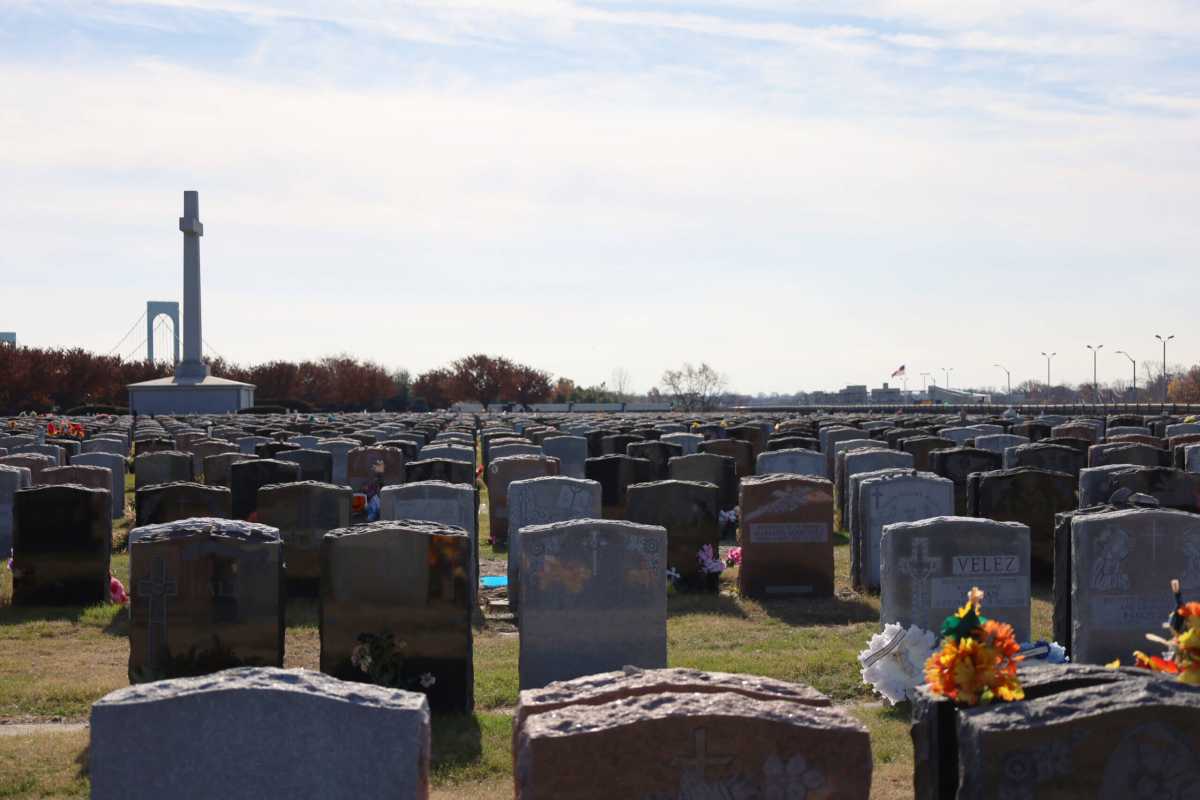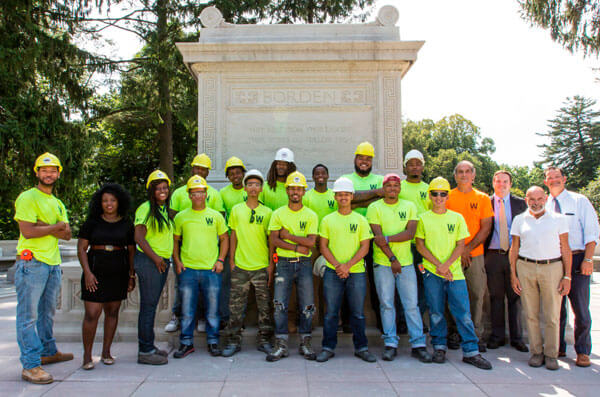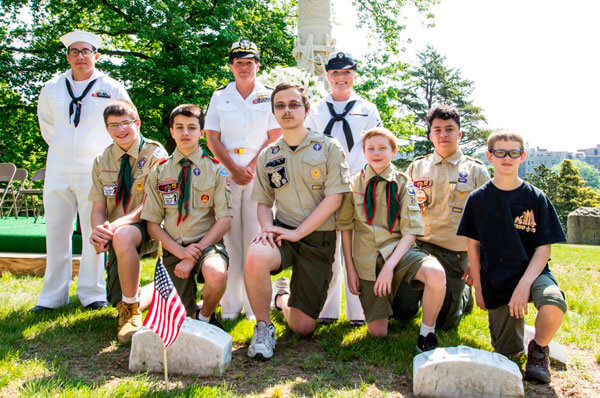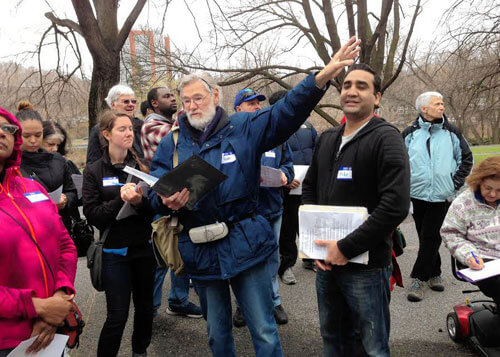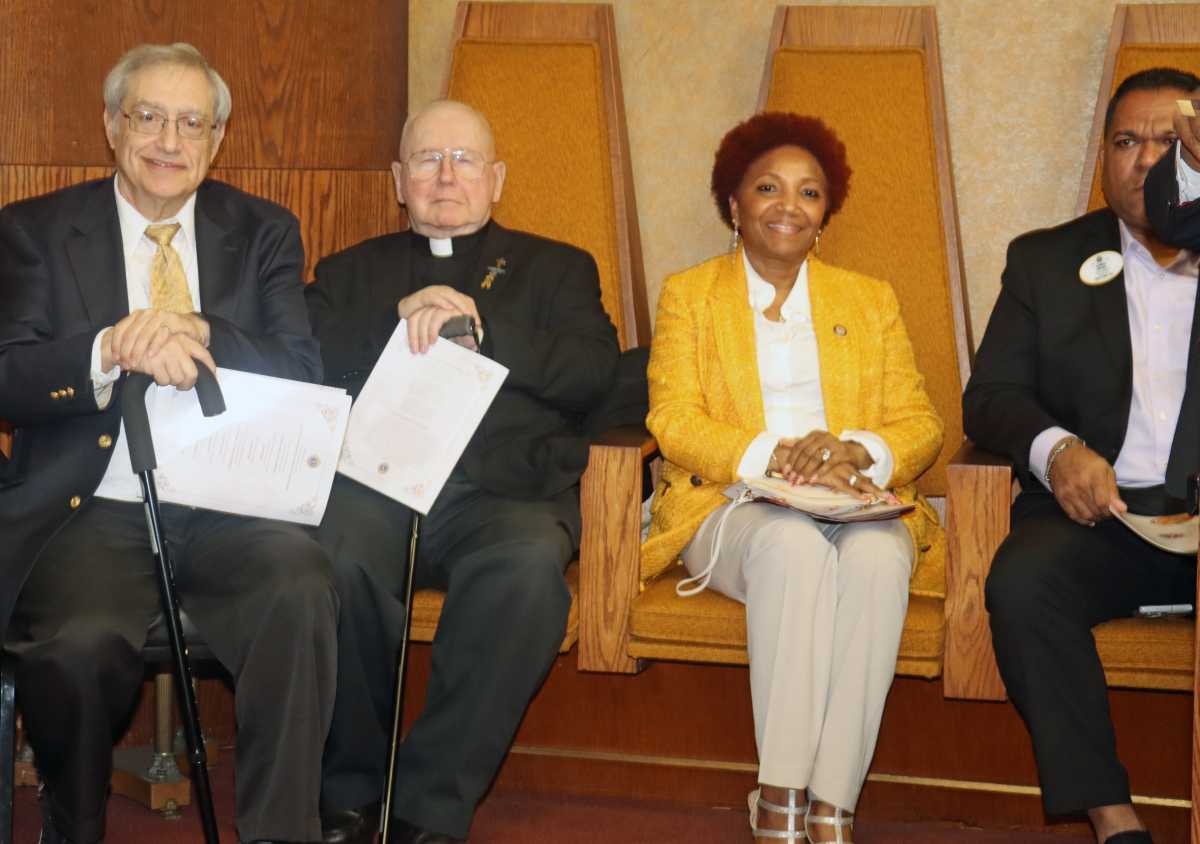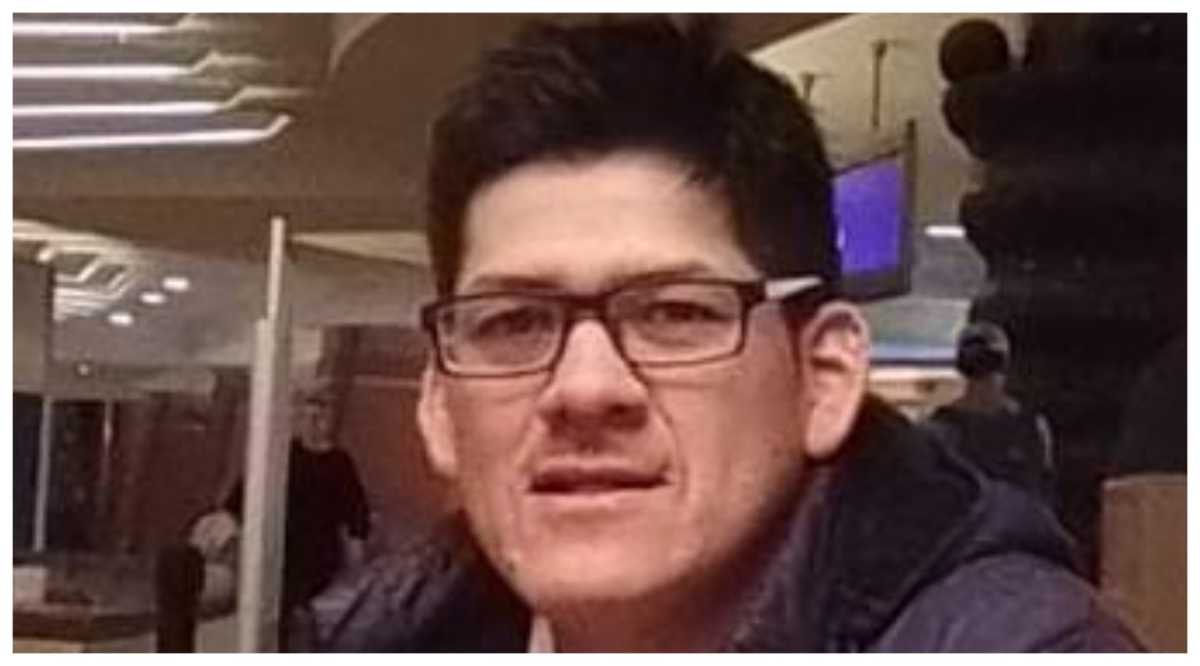Test your knowledge of Bronx history with our monthly column, featuring interesting and otherwise unknown tidbits that expand on the lore of what is often referred to as the forgotten borough. And check back at the beginning of each month for the latest installment.
There is something enchanting about celebrity that causes excitement, wonder and fanaticism in everyday people. Even long after they depart from this mortal coil and disintegrate into the dirt that surrounds them, we revere them and reminisce on their accolades. Such is the afterlife of Billie Holiday, Joseph Pulitzer, Duke Ellington and many others whose names are immortalized in the headstones and mausoleums in cemeteries across the Bronx.
It was a particularly quiet day for visitors of grave sites on the Friday after Thanksgiving, although the leaves and headstones were aglow with sunshine at Woodlawn Cemetery, including that of the “Queen of Salsa” – Celia Cruz.
It is rumored that Cruz, born in Havana, Cuba in 1925, started singing at 10 months old – she was literally born to do it.
Cruz was known for her catchphrase “azucar.” She challenged the status quo of beauty standards and notions of female inferiority in the traditionally male sector of salsa music. Cruz was often ridiculed for her dark skin and wide nose but helped pave the way for Hispanic female musicians who followed.
She sang professionally until the day she died in 2003, resulting in a career that spanned more than 50 years.
A half-mile funeral procession was held for Cruz as thousands upon thousands gathered and watched her coffin pulled by horse-drawn carriage down Fifth Avenue to St. Patrick’s Cathedral in Manhattan. The event was even televised.
Inside Cruz’s mausoleum in Woodlawn is an old black and white photo of the Cuban chanteuse, alongside a string of pearls and a framed Cuban flag.
“It is an honor to be stewards of such rich history, art, and architecture,” said Meg Ventrudo, executive director of the Woodlawn Conservancy, the nonprofit organization that oversees the cemetery.
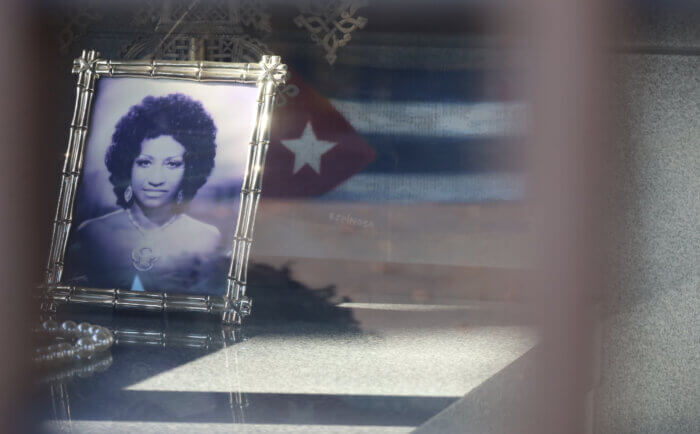
The 400-acre non-denominational cemetery and national historic landmark in the northern section of the Bronx was built in 1863. Woodlawn welcomes those of “all races and religions,” said a spokesperson and holds more than 300,000 graves. Special events and themed trolley tours take visitors through notable gravesites – like the upcoming Holly Jolly Trolley tour on Saturday, Dec. 2, which will feature the final resting places of household names like R.H. Macy and late great lyricist and composer, Irving Berlin.
Famous for his contributions to the “Great American songbook,” Berlin’s timeless hits include “There’s No Business Like Show Business,” “Anything You Can Do (I Can Do Better),” “God Bless America” and the holiday classic and 1943 Academy Award-winning “White Christmas.”
He was born Israel Beilin in 1888, a Russian-Jew who came to the U.S. by way of Ellis Island when he was five years old. The name change came in 1907 when it was misspelled in a song credit. Not only did the name stick, but it was also passed onto his son, Irving Berlin Jr., who was born in 1928 but sadly died just 24 days later. The baby rests in peace at Woodlawn Cemetery alongside his centenarian father who lived a long 101 years old and his mother, Ellin MacKay Berlin, who died at the age of 85 from typhoid fever – but not due to “Typhoid Mary” aka Mary Mallon, who is buried out at Old St. Raymond’s Cemetery in Throggs Neck.
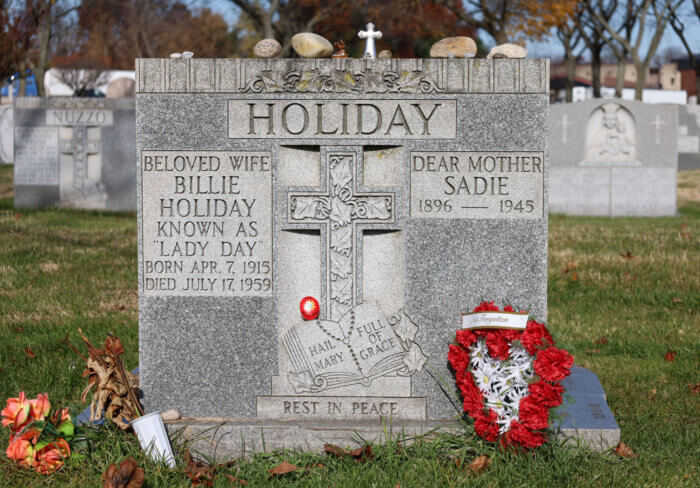
Mallon, born in 1869, owes her legacy to the dozens of people she is believed to have infected with Typhoid fever throughout her career as a cook. The now mostly eradicated disease can be contracted by not properly washing ones hands before handling raw foods. Because she was asymptomatic, it was difficult to prove that Mallon was the source of the infections, but studies of her proximity to the infected showed as much. Of the more than 100 believed to be infected by Mallon, three died.
She was quarantined at Riverside Hospital on the presently abandoned North Brother Island in 1907. The swath of land sits between the South Bronx and Riker’s Island.
In 1910, Mallon was released on the promise that she would not seek work in the food industry, but she did anyway under fake names and continued to allegedly infect people with her poor hygiene practices. She was quarantined again in 1915 where she would remain until her death in 1938.
“This poor woman, you know, suffered so greatly for something that was completely beyond her control,” said Aubrey Slater, of Crotona, who was visiting Mallon’s grave on a recent Friday afternoon. “All she wanted to do was cook and live her life, and that was taken away from her.”
Slater learned of Mallon’s grave from an Atlas Obscura article and has been visiting cemeteries for more than 10 years due to her love for history and appreciation for architecture.
“I’m a Bronx resident and, you know, I love the Bronx and the history of the Bronx,” she said.
Despite there being several cemeteries across the Bronx, Woodlawn and St. Raymond’s are known for their famously interred. Other notables include Gertrude Vanderbilt Whitney, founder of the Whitney Museum; F.W. Woolworth of the now shuttered retail stores; Herman Melville, author of the 1851 classic novel, “Moby Dick” and singer/songwriter Frankie Lymon just to name a few.
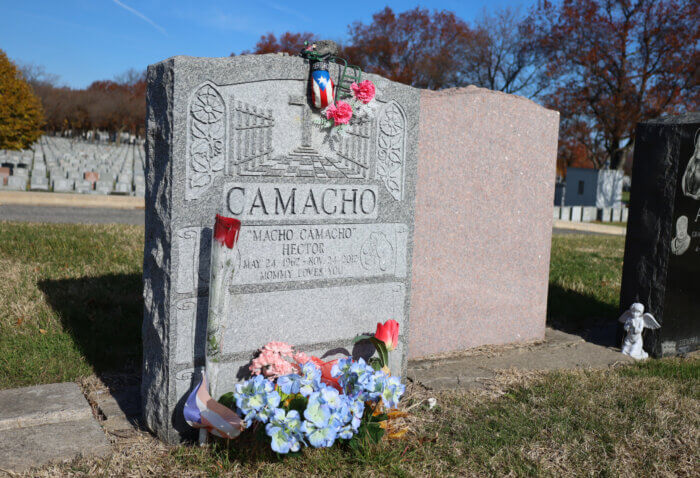
Founded in 1842, the Roman Catholic cemetery of St. Raymond’s expanded in the 1950s and today the grounds are divided into the old cemetery, which runs along East Tremont Avenue and the new cemetery which runs along Lafayette Avenue. Included in the new side is boxing great Hector “Macho” Camacho who dons a boxing glove keychain upon his headstone.
The Puerto Rican boxer began his professional career at the age of 18 and fought for nearly three decades before retiring in 2010. Full of flash, Camacho posted a 79-6-3 record in a lengthy career full of entertaining fights. A champion in three different weight classes, he was involved in some of the biggest fights of his generation against the likes of Felix Trinidad, Julio César Chávez, Edwin Rosario, Ray Mancini, Oscar De La Hoya and Sugar Ray Leonard.
Yet for all his fame and fortune, Camacho was also known for a problematic lifestyle, including a well-documented drug addiction – he was arrested for burglary and drug possession in 2005. He escaped death when he was first shot at in 2011 when visiting his native Puerto Rico. In 2012, he was shot at again in his hometown of Bayamon, Puerto Rico, but wasn’t so lucky this time. Camacho was rushed to the hospital and died a day later of cardiac arrest.
Camacho first came to New York City as a three-year old and grew up in Harlem. He was survived by several family members, including a son who is also a boxer and bears his name and his mother, who buried him with a tombstone that reads, “Mommy loves you.”
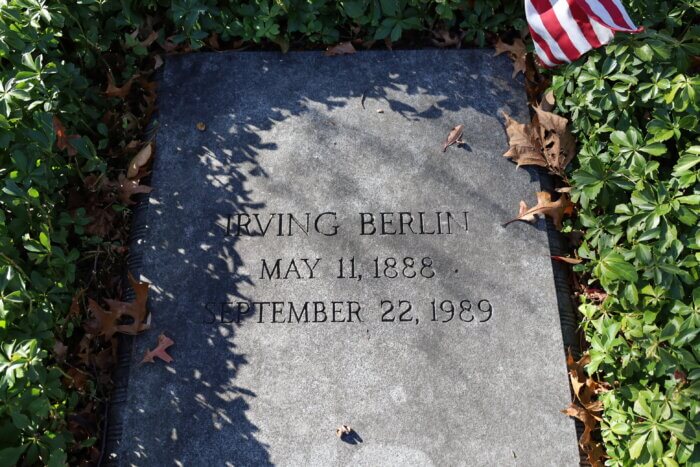
Death is never easy and is often somber and painful, but it is enlightening to know that even after we pass and journey into the abyss, our loved ones will remember us and visit our graves occasionally bringing flowers or souvenirs. And perhaps, when we pass, we will create a legacy strong enough to inspire others to visit as well.
Know any obscure facts about the Bronx that you’d like the Bronx Times to feature in its column? Let us know by dropping an email to editorial@bxtimes.com with “Did You Know” in the subject line.
Correction: This article was updated on Dec. 4 at 12:03 p.m. because it stated that Hector Camacho was buried at Woodlawn Cemetery. He is buried at St. Raymond’s.
Reach ET Rodriguez at etrodriguez317@gmail.com. For more coverage, follow us on Twitter, Facebook and Instagram @bronxtimes

